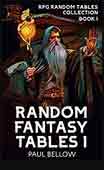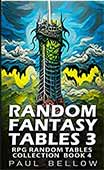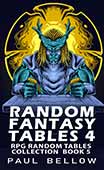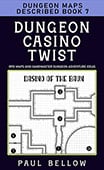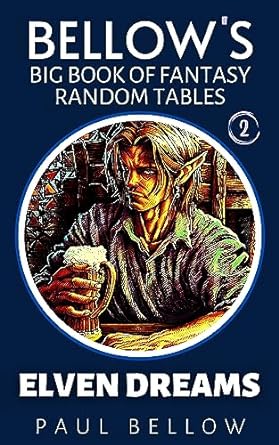In the dim-lit corners of early game shops and cluttered basements where players huddled over graph paper and polyhedral dice, women quietly dismantled the foundations of possibility. Their names, whispered across fanzine pages and half-forgotten at publisher tables, hid behind initials or masculine pseudonyms, yet their fingerprints pressed deep into what roleplaying games would become. Historical narratives, worn smooth by repetition, often skipped these figures, focusing on a narrow roster of male luminaries. This selective memory stems from systemic biases; gatekeeping, dismissive attitudes, and the comfort of entrenched myths that painted gaming as an exclusive brotherhood.
Far from sideline participants, women shaped every axis of RPG culture: inventing story frameworks, transforming table talk into communal rituals, reimagining combat and collaboration alike. Their innovations didn’t just add detail; they upended assumptions about whose voices defined play, who got to invent, and how creativity flowed between designer and audience. Game mechanics, publishing breakthroughs, and entire genres shifted under the weight of their ideas.
Dismissing or overlooking these influences distorts the true inheritance of roleplaying. To understand what makes today’s multifaceted, daring, and inclusive games possible demands tracing not just visible leaders but the entire network of contributors, especially those forced to work at the edges. This article aims to redraw those margins, celebrating trailblazers whose voices echo in every homebrewed campaign, rulebook annotation, or epistolary zine discussion.
Acknowledging these contributions is more than an act of historical justice; it is an invitation. By walking the neon-lit streets these women paved, we inherit a richer, more layered genre, a legacy that challenges each player and designer to imagine bigger, to reach further, and to welcome new pioneers never envisioned in the old blueprints.
Women Who Defined the Early RPG Scene
Cultural memory often paints early RPG history in broad slabs of gray and blue, populated by men who matched dice mythos with the bravado of beer-soaked college dorms. Yet, if one peers into the written correspondence, the fanzines, and the meeting minutes of those same years, a more tangled, vibrant story emerges. Several women, armed with typewriters and a hunger for invention, dismantled the inertia of the status quo. They authored games, edited rules, ran publishing houses, and altered the very DNA of adventure and interaction. Their presence contested not just the popular imagination but the real mechanics of game design, production, and play.
At every step, these pioneers crashed against glass walls. Industry spaces, already hostile to outsiders, often demanded proof beyond proof, testaments to skill, focus, and relentless drive. The games themselves shaped and were shaped by these tensions, as women redefined what a module could be, who could write it, and how community assembled around shared storytelling. Pushing past ridicule and sometimes outright hostility, these creators designed with a blend of wit and grit that seeded future cultures of inclusivity.
Try my AI Tabletop RPG generators...and an extensive library of content!
Boldness sat at the heart of their work. Whether through designing solo adventures, editing zines, authoring rulebooks, or coaxing new ideas from collaborators, these women knitted together complex structures of play. They rewrote expectations, invited others to the table, and built scaffolding that propped up a sprawling industry still reckoning with the breadth of their vision. The genre, in all its current depth, owes both its foundation and its potential to these innovators who refused to be silent or sidelined.
Lee Gold
Lee Gold emerged in the seventies when the RPG landscape barely stretched past a handful of newsletters and hand-mimed conventions. Her fingerprints first appeared on Alarums & Excursions, an unassuming periodical that would mutate into the lodestone of community-driven RPG discourse. Through her stewardship, Gold collated letters, arguments, experimental rules, and wild theorizing, transforming disconnected voices into a vibrant, ongoing conversation. She didn’t simply edit; she cultivated, forging intellectual kinship and a participatory ethic rare in genre media.
Gold’s design credits, specifically Land of the Rising Sun and Lands of Adventure, revealed a penchant for bold, cross-cultural synthesis and meticulous playtesting. Where others followed, she blazed paths through rarely trodden settings and mechanics, showing that independent authorship could punch as hard as any corporate effort. Her body of work set standards not just for what games could say, but for how designers and players could shape their own futures.
| Name | Contribution | Years Active | Company/Publication | Notes |
|---|---|---|---|---|
| Lee Gold | Editor, community-builder, RPG designer | 1975–present | Alarums & Excursions; FGU | APA pioneer, first RPG periodical; maintained uninterrupted monthly publication 45+ yrs |
Gold’s influence radiates outward not with the blinding wattage of corporate PR, but with the slow, deliberate burn of community. Alarums & Excursions became not only an archive of emergent RPG theory but a safe haven for women and other marginalized creators. Through her encouragement and refusal to gatekeep, she opened space for new contributors and built bridges between disparate gaming scenes.
⚔️ Fantasy RPG Random Tables Books
Make life as a Gamemaster easier…
If you play Dungeons & Dragons, Pathfinder, or other fantasy RPGs, this
RPG random tables series
is packed with encounters, NPCs, treasure, and more. Available in eBook or print—either way, you’ll have a wealth of adventure ideas at your fingertips.
It’s no exaggeration to say Gold’s careful stewardship carved out the first lasting space where diversity of experience held equal weight to mechanical expertise. Many female designers recall her mentorship or cite the forums she maintained as crucial in their journey. Her legacy isn’t just bound up in clever rules or unique settings; it reverberates in every independent RPG zine, experimental module, and social media thread devoted to the craft of communal storytelling.
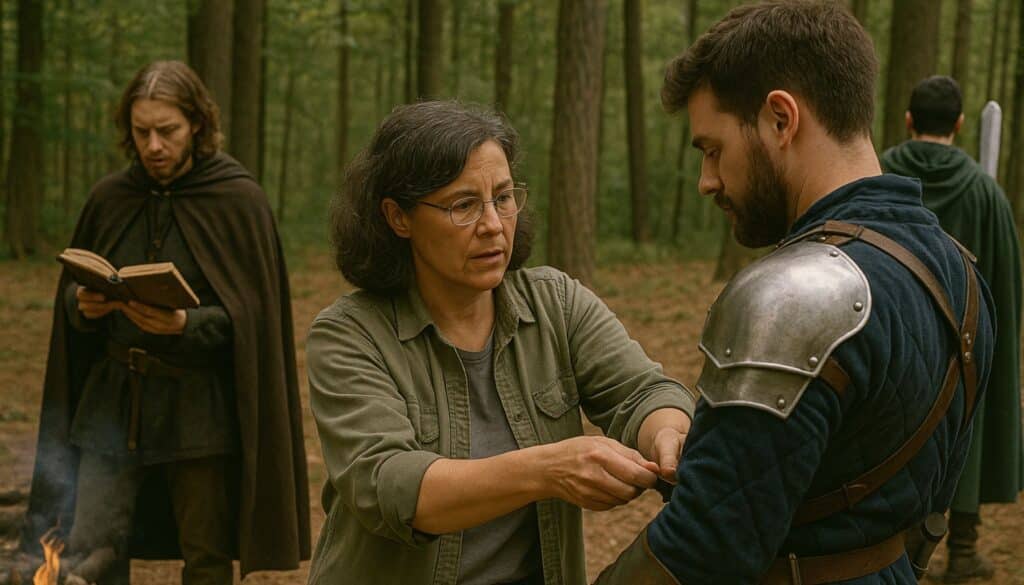
Jennell Jaquays
Jennell Jaquays’ fingerprints run deep in the architectural bones of early adventure modules. Under the slightly ambiguous pen name “Paul Jaquays,” she first transformed The Dungeoneer from a parochial fanzine into a new kind of design laboratory, a place where scenario complexity and narrative layering were nurtured rather than neutered. Her subsequent work at Judges Guild and Chaosium broke open the boundaries of what published adventures could accomplish. Her maps, in particular, offered verticality and surprise, eschewing the linearity that dominated the era’s publications.
Professional constraints forced Jaquays to mask her identity while her writing and artwork appeared under the more socially acceptable moniker. Industry attitudes pressed her and so many others against glass ceilings, yet the challenges crystallized a sharper edge to her work. The indelible mark left by modules like Caverns of Thracia can still be traced in modern dungeon design; her scenarios throbbed with stories demanding to spill outside bounds, influencing both rulesets and narrative tone.
- Designed iconic, non-linear dungeon maps that challenged exploration conventions
- Developed early adventure modules that became blueprints for countless later works
- Pioneered complex, multi-threaded narrative scenarios within module frameworks
- Helped define RPG publishing standards during industry infancy
- Served as a visible, out trans woman and advocate within the RPG community
- Advanced female participation behind-the-scenes, mentoring junior designers
- Created diverse gaming material for multiple systems, broadening industry scope
- Fought gatekeeping by advocating for open submissions in fanzine culture
- Elevated adventure writing into true collaborative artistry between designer and table
- Inspired generations with public discussions on creativity and inclusivity
Modern RPGs still reflect the scaffolding Jaquays erected. Designers riff on her multidimensional layouts and flexible narrative logic, while contemporary modules echo her insistence that physical geography should serve story, not strangle it. Readers consume innovations first championed by Jaquays every time they wade into a sprawling game world that bends and folds under scrutiny.
More than her architectural genius, Jaquays’ unflinching openness about her identity set a standard for visibility and courage. In industry circles still marked by old prejudices, her life became a living argument for the necessity of inclusion, empathy, and unrestrained imagination. Her journey from hidden figure to public touchstone tracks the evolving arc of the RPG community itself.
Judith Kerestan
Judith Kerestan’s mark on RPG history arrived with the first wave of independent supplements, her fingerprints smudged across Palace of the Vampire Queen. At a time when “official” products defined legitimacy, Kerestan and her collaborators detonated expectation, handing ownership of adventure content to anyone with a typewriter and enough ambition. Her work offered not just new stories, but a blueprint for community-powered evolution, inviting outsiders to trespass industry boundaries.
The modules that bore her name didn’t just expand the catalog of available adventures; they infused the genre with an outsider sensibility. Kerestan helped turn the third-party supplement from a risky side hustle into an engine of innovation, breaking TSR’s monopoly over the shaping of fantasy spaces. What once felt inviolable now became an open-source invitation, and the floodgates soon crashed open for other mavericks.
- Early leader in independent RPG module publishing
- Co-authored Palace of the Vampire Queen, the first third-party D&D module ever released
- Advanced innovation in adventure design, including puzzles and open-ended exploration
- Championed accessibility for homebrew and indie publishers to compete with major companies
- Contributed to adventures that defied linear storytelling, encouraging creative DM improvisation
- Inspired the creation of new intellectual property outside original publisher control
- Supported publishing networks connecting fanzines, zines, and module creators
- Helped develop distribution models for small batch, regional, and mail-order RPG material
- Bolstered legitimacy of female and non-male designers in an exclusionary early industry
- Pushed for broader thematic diversity, from horror to intrigue, in adventure design
- Elevated expectations for module layout, presentation, and supplementary artwork
- Mentored new designers through informal correspondence and local club activity
Kerestan’s initiatives redrew where creative authorship started and ended. Her work incubated the idea that the best adventures might never surface in the official catalog, emboldening future publishers to pursue their own visions. Whole genres from investigative horror to comedic dungeon crawls owe a debt to this willingness to expand beyond corporate templates.
By nurturing an ecosystem of independent voices and challenging the authority of early market leaders, Kerestan stoked a culture of critical experimentation. Designers who followed drew upon her models, splintering the once-monolithic industry into a patchwork of styles and systems, leaving RPGs richer, wilder, and infinitely more inclusive than before.
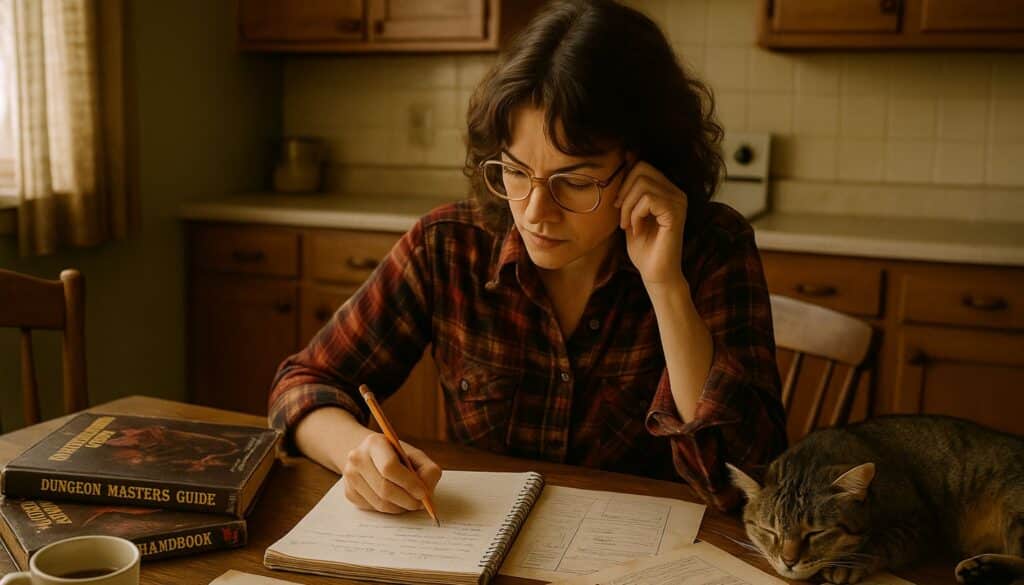
Lillian “Lee” Russell
Lillian “Lee” Russell etched out a place in the annals of RPG authorship with Tunnels & Trolls Solo Adventure #3: Labyrinth, a supplement that dared to let players navigate peril alone, sans game master. For the first time in RPG history, the byline on such a module belonged to a woman, a quiet but seismic shift in an industry that seldom allowed women visible creative authority. In a field notorious for exclusion, Russell’s authorship cracked open the possibility of solo play and solo design.
Labyrinth rose not just as a module, but as a signature of unrestrained narrative experimentation. Russell sculpted puzzles, traps, and encounters that channeled both mythic danger and personal introspection. Her style embedded story seeds in every corridor, reminding readers that creativity’s locus could shift, moving away from omniscient DMs to the internal theaters of each player alone with their fate.
⚔️ Fantasy RPG Random Tables Books
Make life as a Gamemaster easier…
If you play Dungeons & Dragons, Pathfinder, or other fantasy RPGs, this
RPG random tables series
is packed with encounters, NPCs, treasure, and more. Available in eBook or print—either way, you’ll have a wealth of adventure ideas at your fingertips.
Russell’s work broadened the blueprint for adventurous solitude, proving solo modules could stand toe-to-toe with their group-oriented siblings. She wielded constraints as provocations, transforming the “limitations” of solo play into new wells of drama and tension. Writers of choose-your-own-adventure books and modern digital RPGs alike trace a line back to this innovation.
Lasting impact came not only by virtue of her gender or the module’s format, but by her refusal to write within the lines. Russell’s approach reshaped expectations: women could author vital supplements, solo play could breed as much excitement as any table of dice-slingers. In every modern solo adventure, echoes of her vision persist, inviting fresh generations to claim their place in the evolving chronicle of roleplaying.
Liz Danforth
At Flying Buffalo, Liz Danforth became a singular force; editing, illustrating, and designing with a touch that reshaped both the look and language of RPG supporting materials. Danforth helmed critical updates to Tunnels & Trolls, continually refining mechanics and narrative style while anchoring its unique position in the market. Sorcerer’s Apprentice, under her editorial vision, evolved from an in-house rag into a beacon for critical commentary, new talent, and design exploration.
Danforth’s sense of both play and precision transformed more than rules and articles. She advocated for accessibility, sharp prose, and careful editing, pushing for standards that raised expectations industry-wide. In every issue and supplement, Danforth’s attention to emerging voices stood out; her byline as likely to appear beside cover art as in the editorial credits, mentoring new writers and showcasing underheard perspectives.
| Name | Contribution | Years Active | Company/Publication | Notes |
|---|---|---|---|---|
| Liz Danforth | Editor, designer, illustrator, standards-setter | 1976–present | Flying Buffalo, Inc. | Editorial leadership; T&T innovation; bridging creative writing and mechanics; key voice in Sorcerer’s Apprentice for 20+ years; influential mentor to women in the industry; diversified RPG art and content with a strong editorial hand; expanded game accessibility and narrative complexity; advanced female and minority representation in RPG publishing; regarded as a cornerstone of Tunnels & Trolls evolution; maintained enduring presence across RPG eras; encouraged new writers and artists to break into the field; pivotal contributor to collaborative RPG culture; early pioneer of multi-role engagement in RPGs; elevated editorial bar for RPG periodicals and supplements; recipient of numerous industry honors for contributions; significant influence on modern RPG blog and zine culture; advocated for creator rights and fair crediting; known for blending mechanical innovation with accessible reading; celebrated for her distinctive cover illustrations |
Standards Danforth set linger in every subsequent RPG publication. Her insistence on clarity and craftsmanship bled outward, elevating the editorial bar for what could plausibly reach print. Magazines and supplements that followed, from Dragon to indie darlings, grappled with the benchmarks she established.
Her influence radiates not just through formal publications, but grassroots zines and blog culture. Every editor who mentors overlooked talent, every publisher prioritizing both artistry and mechanics, owes a debt to Danforth’s legacy. She proved that the genres could be shaped as much by the hands at the editorial desk as by those rolling dice at the table.

Jean Wells
Jean Wells, the first woman hired as a game designer at TSR, plowed through fields littered with glass for every inch of ground she gained. Her fingerprints cling to the Dungeon Masters Guide and Palace of the Silver Princess; a module that carved a singular place in D&D history. TSR’s internal politics attempted to erase or diminish her achievements, but the audacious originality and spirit of these works refused erasure.
Try my AI Tabletop RPG generators...and an extensive library of content!
Wells’ creative ambition crashed against the kind of institutional resistance reserved for the rare outsider. She authored the first female-led adventure module, placed women at the narrative center, and democratized dungeon design to invite girls and underrepresented voices into the gaming fold. Advocacy became a daily occupation for Wells, who refused to cede ground to intimidation or erasure.
- First female game designer at TSR, breaking entry barriers for women in the studio
- Contributed critical development to key D&D publications, including Dungeon Masters Guide
- Authored Palace of the Silver Princess, the first D&D module with a female protagonist
- Advocated internally for fair representation and credit for female designers
- Mentored younger women and minorities at TSR, fostering inclusive workplace practices
- Served as a liaison between creative and editorial teams, amplifying diverse perspectives
- Fought public censorship and company backlash over narrative content
- Champion of young player engagement through creative module design
- Helped raise standards for module layout, art, and collaborative authorship
- Maintained active correspondence with fans, encouraging broader participation in design
The ripples of Wells’ struggle carried through future generations of designers. Her courage illuminated industry evasions and forced conversations on representation, pay equity, and authorship credit that continue to echo. At conventions, in online forums, and among grassroots mentors, her story resonates as a call for vigilance and bravery.
Without Wells’ candor and creative ferocity, female designers at major publishers might still find themselves apologizing for their vision. Instead, her legacy makes every table where girls and women roll dice in their own voice not only possible, but inevitable.
Rose Estes
At TSR, Rose Estes injected fresh blood into the roleplaying world by inventing the Endless Quest series; modules that read like novels, plunging players into branching narratives that broke the mold of standard tabletop play. Estes positioned herself at the intersection of education and adventure, designing stories that enticed reluctant readers and young fans who’d otherwise bounce off the hobby’s more esoteric rules.
By layering interactive fiction with educational elements, Estes cultivated a breed of RPG storytelling that invited parents, teachers, and whole families into the fold. The wild popularity of Endless Quest books shattered marketing assumptions about who could enjoy fantasy games. Under her hand, product lines multiplied, and demographic boundaries for RPGs faded.
- Authored and directed the bestselling Endless Quest series, introducing millions to RPG-style stories
- Broadened RPG reach to children, families, and new demographics
- Integrated reading comprehension and educational elements into game storytelling
- Organized marketing and outreach at TSR to target libraries and schools
- Promoted non-linear narrative techniques in fantasy fiction
- Led effort to create spin-off product lines, keeping D&D relevant across markets
- Encouraged more girls to participate in RPG fandom through accessible writing
- Fostered collaboration between writers, designers, and educators at TSR
- Promoted diversity of content, themes, and protagonists in interactive fiction
- Inspired later generations of gamebook authors and narrative designers
Estes’ vision for what RPG-related media could accomplish remains foundational. Interactive novels, digital adventure books, and classroom RPGs all trace their DNA to her work at TSR. She opened doors to fans outside the prototypical gamer demographic, championing broader accessibility and diversity long before these became industry buzzwords.
Interactive storytelling as a gateway to RPG culture owes her a direct debt. Estes’ books did more than sell; they made belonging possible for countless readers who’d never set foot in a game shop, freeing the genre to imagine ever-wider horizons.
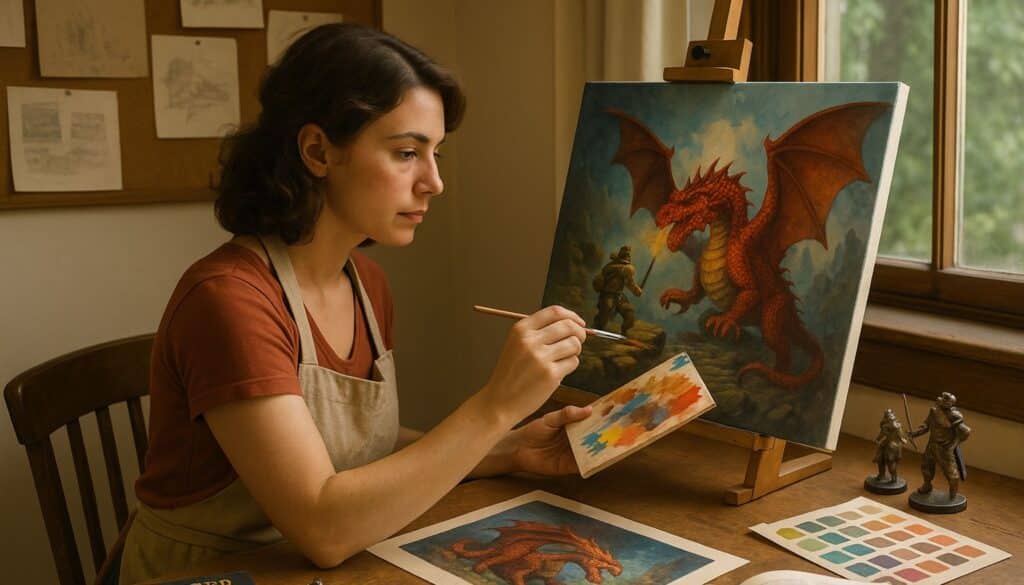
Margaret Weis
Margaret Weis entered the industry at a time when “licensed tie-in” and “game supplement” might as well have meant hackwork. Instead, alongside Tracy Hickman, she co-created Dragonlance; a multimedia saga fusing literary ambition with innovative campaign design. Weis’ writing crisscrossed genres, intertwining novels and rulebooks to build a tapestry that encouraged players to inhabit layered, living worlds.
Her impact reverberates not just in enduring sales, but in the twin companies she founded: Sovereign Press and Margaret Weis Productions. Both studios pushed narrative-driven system design into new territories, publishing beloved properties and supporting diverse creators. Weis’s fingerprints can be found on nearly every corner of RPG storytelling, from rules systems to long-running fiction series.
| Name | Contribution | Years Active | Company/Publication | Notes |
|---|---|---|---|---|
| Margaret Weis | Co-creator Dragonlance, publisher, company founder | 1983–present | TSR, Sovereign Press, Margaret Weis Productions | Co-wrote Dragonlance novels and modules; powered narrative-driven campaign design; global bestsellers; founded two influential companies; key figure in RPG literary integration; innovated story-first supplement publishing; fostered cooperative studio environments; directly mentored new talent; supported genre cross-pollination (TV, film, comics, games); led award-winning projects; pivotal to industry transformation; sustained multi-decade creative output; renowned speaker and advocate; inspired wider RPG fandoms; widely recognized with lifetime achievement awards |
Storytelling in RPGs owes much of its modern breadth to Weis. Her hybrid approach (melding the emotional rigor of novels with collaborative, emergent play) brought legitimacy and literary audacity to RPGs. Players no longer hovered on the edge of history; they lived, loved, and lost within massive, interconnected mythologies.
Weis’s influence isn’t static nostalgia. Her ventures into independent publishing anticipated modern trends, establishing creative independence as a gold standard. Through her writing, company leadership, and mentorship, she reshaped the infrastructure of RPG communities, preparing the ground for ever-wilder dreams yet to surface.
Lisa Stevens
Lisa Stevens sliced through the industry’s tangled undergrowth, shaping the destiny of multiple publishers and rewriting the rules for what a powerhouse could look like. Starting at Lion Rampant, where she helped cook up the foundational brew that spilled into White Wolf, Stevens carried her strategic spark to Wizards of the Coast, intervening at crucial moments to revive D&D, launch Magic: The Gathering, and recalibrate the landscape of hobby gaming.
At Paizo Publishing, Stevens unleashed Pathfinder, transforming a “side project” into a sprawling juggernaut. Under her calm, laser-focused leadership, the company shattered assumptions about who owned the RPG mainstream. Stevens became known both for her creative business sense and for forging communities where designers, artists, and fans alike could flourish.
- Founding member and executive force in Lion Rampant, White Wolf, and later Wizards of the Coast
- Pivotal role in resurrecting D&D and launching Magic: The Gathering at WotC
- Architect of Paizo Publishing’s rise, establishing Pathfinder as a dominant industry force
- Guided the licensing, relaunch, and evolution of D&D during crucial transitions
- Championed the Open Gaming License, enabling third-party RPG innovation
- Built collaborative work cultures, emphasizing mentorship and internal diversity
- Pushed for cutting-edge crowdfunding strategies years before industry adoption
- Expanded RPG communities with organized play and digital support
- Influenced global supply chains, print strategies, and product bundling models
- Advocated for equitable crediting and compensation in RPG publishing
- Lobbied for the inclusion of diverse talent in creative and executive roles
- Helped develop industry-wide standards for freelance contracts and labor
- Supported and promoted new game designers, giving crucial first breaks
- Advanced transparent company communication with fans and reviewers
Industry watchers speak of Stevens as a transformative presence, someone who collects companies and communities, rebuilding both after every brushfire or crash. Her panoramic vision redefined how RPGs get designed, funded, and delivered, making way for a generation of hybrid creators no longer bound by genre or medium.
Whether redrawing the map for imports and distribution, or championing inclusivity metrics as business imperatives, Stevens’ trailblazing prowess set new norms. To work in publishing after Stevens is to live within her shadow, yet her lasting gift is a field resilient enough to welcome those who walk further than she could have ever imagined.
Celebrating the Legacy of Women RPG Creators
Legacies, when left to ossify, breed fossilized versions of the truth, flattened hierarchies, anthems celebrating only the loudest names. The real shape of RPG culture, though, emerges from a mosaic of invention, cross-pollination, and stubborn perseverance. Women helped weave the intricate lattice of rules, setting, and social practice that defines what a roleplaying game means, and their ongoing influence pulses across every new system, table, and digital platform.
⚔️ Fantasy RPG Random Tables Books
Make life as a Gamemaster easier…
If you play Dungeons & Dragons, Pathfinder, or other fantasy RPGs, this
RPG random tables series
is packed with encounters, NPCs, treasure, and more. Available in eBook or print—either way, you’ll have a wealth of adventure ideas at your fingertips.
To recognize these pioneers is to read the genre in full resolution. With every module, zine, or coded campaign, they widened the circle, removing the velvet ropes, pushing new mechanics and experimental publishing, and reminding everyone that play’s richest magic lies in the collision of difference. Their contributions stitched together space for pluralism, for surprise, for an RPG future expansive enough to hold all who dare to dream.
This trail, mapped with so many hands, resists neat summation. It demands constant attention, an active remembering that reaches beyond official credits toward the messy, glorious ledger of creative exchange. By honoring these women’s achievements, we not only right the record, but also charge every player, designer, and publisher with the task of defending, expanding, and diversifying the field anew.
As the dice keep rolling, and as campaigns spiral off in unpredictable directions, the best possible tribute is openness. RPGs grow healthiest in soil turned by many. Celebrating the trailblazers ensures that tomorrow’s games belong to everyone bold enough to claim a seat at the table.


